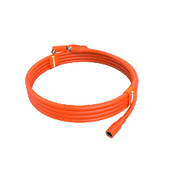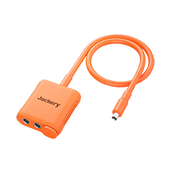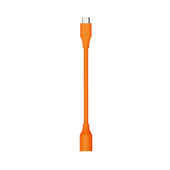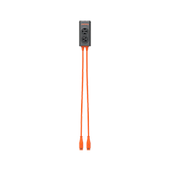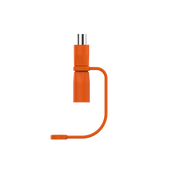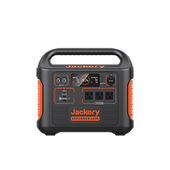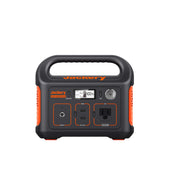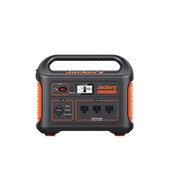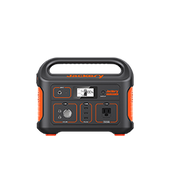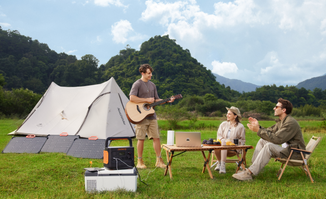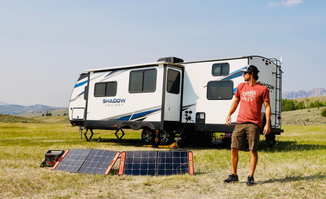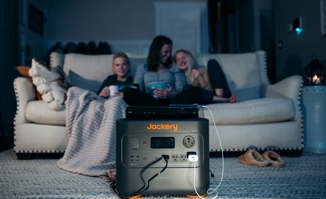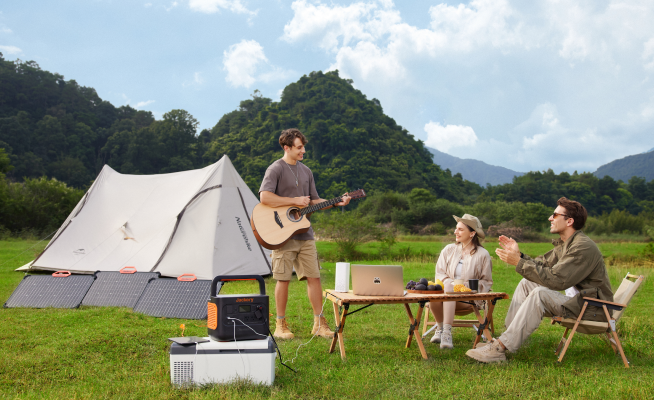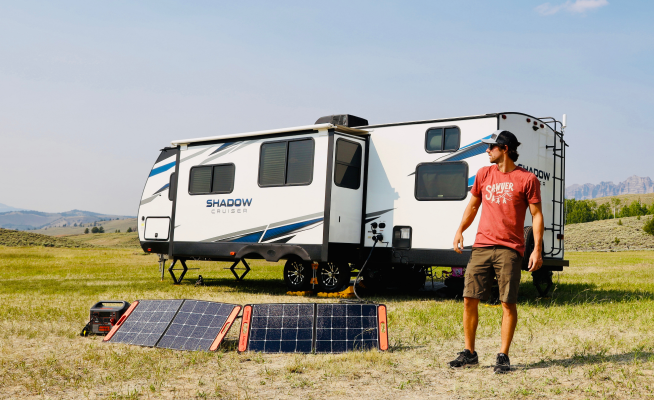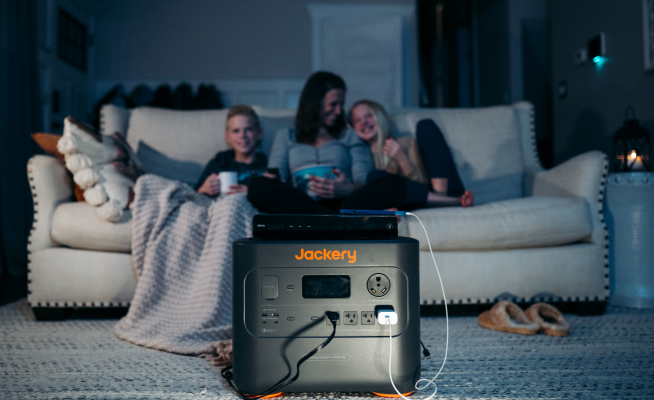Solar Powered Mini Split: Can Solar Generator Run a Mini Split
Solar-powered mini-split is the latest innovative technology popular because of its cost-effectiveness and efficiency. They reduce energy demand and electricity costs and help overcome greenhouse gas emissions. A solar mini-split uses solar power from the sun, which is later converted into electricity. Solar power has become the most popular technology because it is sustainable, environmentally friendly, and cost-effective to produce electricity.
What Is A Solar Powered Mini Split
A solar-powered mini split comprises solar panels, an inverter, a charge controller, and batteries. Solar panels capture the energy from the sun. This energy can be used live, or it can be stored in the battery. However, this energy is in DC mode, then converted into AC using an inverter. Now, you can connect your split air conditioner with a battery through an inverter and connect it with grid power. So, you can switch between both energy sources without any extra equipment.
Solar Powered Mini Split VS. Solar Generator for Mini Split
Solar power has many benefits, including better environmental impact and increased power efficiency. You can power your mini-split as a solar-powered mini-split or use a solar generator to power your mini-split. There is a difference in the methods used to employ solar power.
|
Types |
Usages |
Features |
Pros |
Cons |
|
Solar Powered Mini Split |
They are used indoors and in RV, camping and boating. |
Precise thermostat. Easy to operate |
Less energy requirement. No fuel. No greenhouse gas emissions. |
Less efficient |
|
Solar Generator for Mini Split |
Can be used indoors and outdoors Multiple devices can be powered. |
LED display to show charging and other stats. No fluctuations Safe and secure. |
No greenhouse gas emissions No fuel Quiet operation. Low maintenance. |
Need recharging |
Solar-Powered Mini Split
Solar-powered mini split units are used with HVAC systems that can work with solar panels. These units are used in homes, garages, sheds, and other places. They are also very popular for RVs, campers, and trailers because of their low power consumption and durability.
Pros
- Solar-powered mini splitunits are very energy efficient.
- They come with a DIY solar power mini split kit.
- Solar-powered mini-split units also draw less starting power than traditional HVAC systems.
- They can run on both solar and grid power hence switching is effortless.
Cons
- They are more expensive than traditional ACs.
- Solar-powered mini splitunits will work best in bright sunny locations.
- They might not be as efficient as other air conditioners.
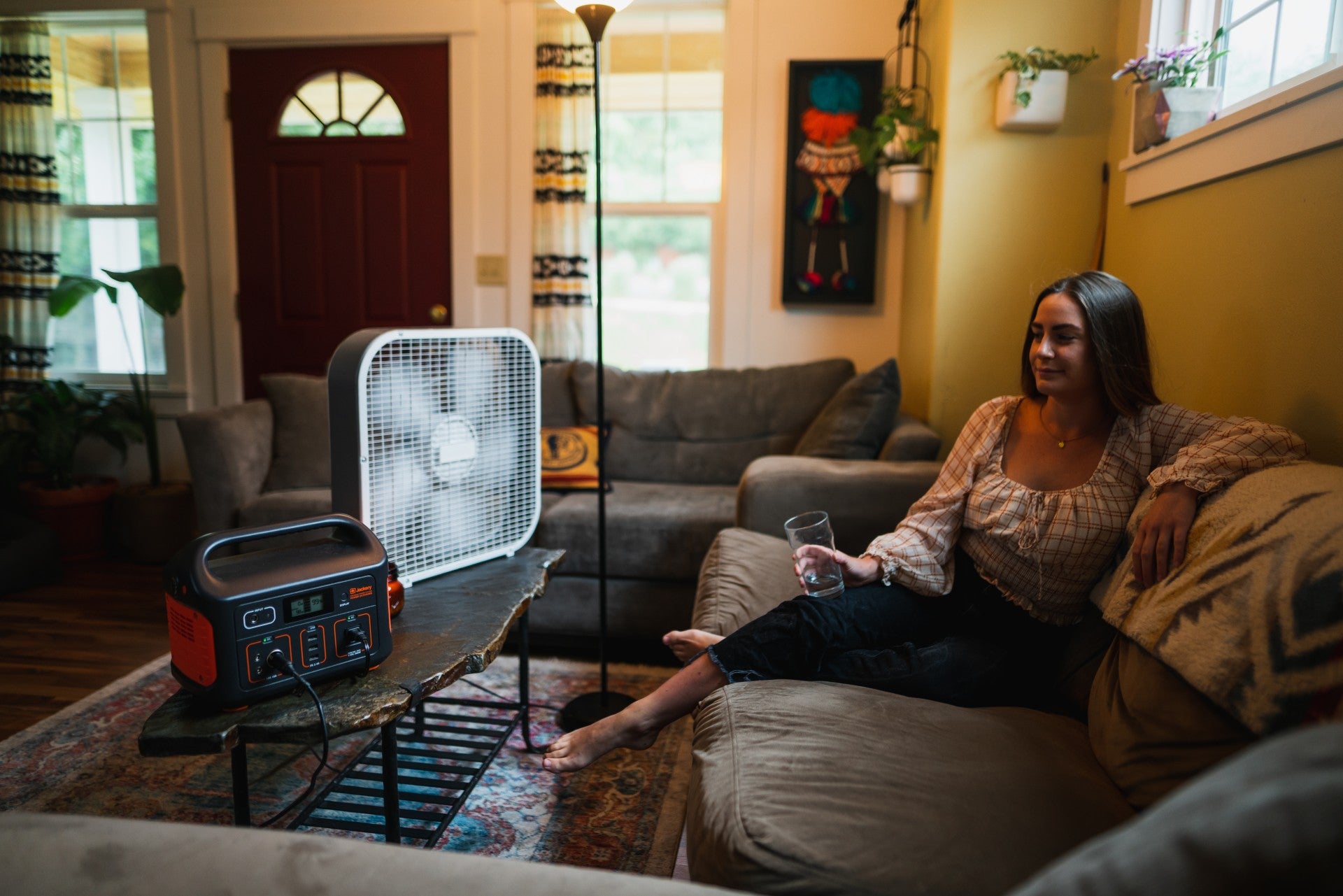
Solar Generator for Mini Split
A solar power generator is a portable power station that runs on solar panels. It uses solar panels to receive solar energy and then stores it in batteries for later use. They are very popular both indoors and outdoors. They are used for RV camping, boating, and off-grid living.
Pros
- Zero fuel cost.
- Clean, environmentally friendly energy.
- No noise or fumes.
- Low maintenance.
Cons
- Some solar generators may be sensitive to temperature changes. However, high-quality generators like Jackery are weather resistant.
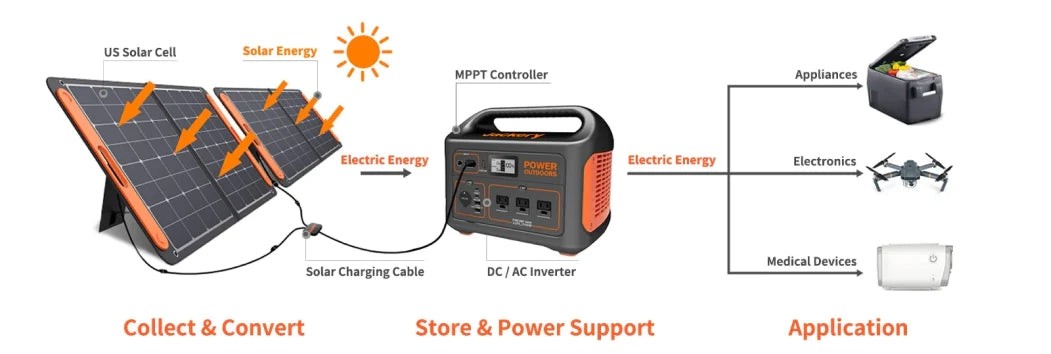
How Many Watts Does A Mini Split Use
Before understanding the wattage requirement of a mini split, it is important to overview some important terms like voltage, ampere, and watts and their relationship.
Voltage
A voltage or the number of volts is the amount of energy provided to a circuit or appliance. A battery always has a fixed voltage and will work for the corresponding voltage circuit.
Current
Current is measured in amperes, which refers to the electricity flowing per second.
Power
Power is the amount of energy consumed by an appliance. It is measured in watts, and its formula is given by;
Power = voltage x current
Watts = Volts x Amp
Here is an overview of the average wattage requirements of different mini-split units. It is important to note here that the running wattage is the watt requirement during the operation of your appliance, while starting wattage is the surge of power that your device needs while starting. This requirement lasts for a very short time.
|
BTU Rating |
Avg. Running Wattage |
Wattage at Set Temperature |
Starting wattage |
Avg. Amperage at 115-130 V(AC) |
|
9000 |
700 Watts |
100 - 200 Watts |
2000 - 2500 W |
6 Amps |
|
12000 |
900 Watts |
200 - 300 Watts |
3000 - 3500 W |
8 Amps |
|
15000 |
1100 Watts |
300 - 400 Watts |
3500 - 4500 W |
10 Amps |
|
18000 |
1400 Watts |
350 - 500 Watts |
4500 - 5500 W |
12 Amps |
|
24000 |
1800 Watts |
600 - 800 Watts |
6000 - 7500 W |
16 Amps |
How Much Solar Power Does A Mini Split Need
How much solar power a mini split need depends on several factors, including;
- How big is the room?
- Insulation of the area.
- The difference between the temperature outside the room and indoors.
If you require a temperature of 70°F in the room, then the rough power consumption estimation is as follows.
|
Outdoor Temperature |
BTU Rating |
Estimated Daily Energy Consumption (kWh/day) |
Estimated Hourly Energy Consumption (kWh/hour) |
Estimated Daily Energy Consumption (Ah/day) at 12V |
Estimated Hourly Energy Consumption (Ah/hour) at 12V |
|
85°F |
9000 |
8 kWh/day |
0.35 kWh/hour |
650 Ah/day |
27 Ah/hour |
|
12000 |
10 kWh/day |
0.4 kWh/hour |
850 Ah/day |
35 Ah/hour |
|
|
15000 |
12 kWh/day |
0.5 kWh/hour |
1000 Ah/day |
42 Ah/hour |
|
|
18000 |
14 kWh/day |
0.6 kWh/hour |
1200 Ah/day |
50 Ah/hour |
|
|
24000 |
18 kWh/day |
0.75 kWh/hour |
1500 Ah/day |
63 Ah/hour |
|
|
95°F |
9000 |
12 kWh/day |
0.5 kWh/hour |
1000 Ah/day |
42 Ah/hour |
|
12000 |
15 kWh/day |
0.6 kWh/hour |
1250 Ah/day |
52 Ah/hour |
|
|
15000 |
20 kWh/day |
0.85 kWh/hour |
1650 Ah/day |
70 Ah/hour |
|
|
18000 |
25 kWh/day |
1 kWh/hour |
2000 Ah/day |
85 Ah/hour |
|
|
24000 |
35 kWh/day |
1.5 kWh/hour |
3000 Ah/day |
125 Ah/hour |
|
|
100°F or more |
9000 |
15 kWh+/day |
0.6 kWh+/hour |
1250 Ah+/day |
52 Ah/hour |
|
12000 |
20 kWh+/day |
0.85 kWh+/hour |
1650 Ah+/day |
70 Ah/hour |
|
|
15000 |
24 kWh+/day |
One kWh+/hour |
2000 Ah+/day |
85 Ah/hour |
|
|
18000 |
30 kWh+/day |
1.25 kWh+/hour |
2500 Ah+/day |
105 Ah/hour |
|
|
24000 |
40 kWh+/day |
1.7 kWh+/hour |
3300 Ah+/day |
140 Ah/hour |
Jackery Solar Generator for Mini Split
A solar power generator is the best way to power a mini split when you want to switch to solar energy. These generators are a very versatile power solution because one generator can run various devices simultaneously. Also, they are easy to carry and can be taken anywhere to be used outdoors because they are very well weather resistant.
Jackery has a wide range of solar generators with different specifications. You can choose one according to your requirements. The high-capacity generators can power big appliances, including mini splits, refrigerators, lights, and much more. The best Jackery solar generators for mini splits are Jackery Solar Generator 2000 Pro, 1500 Pro, and 1000 Pro. Following is a quick overview of the Jackery solar generator specifications.
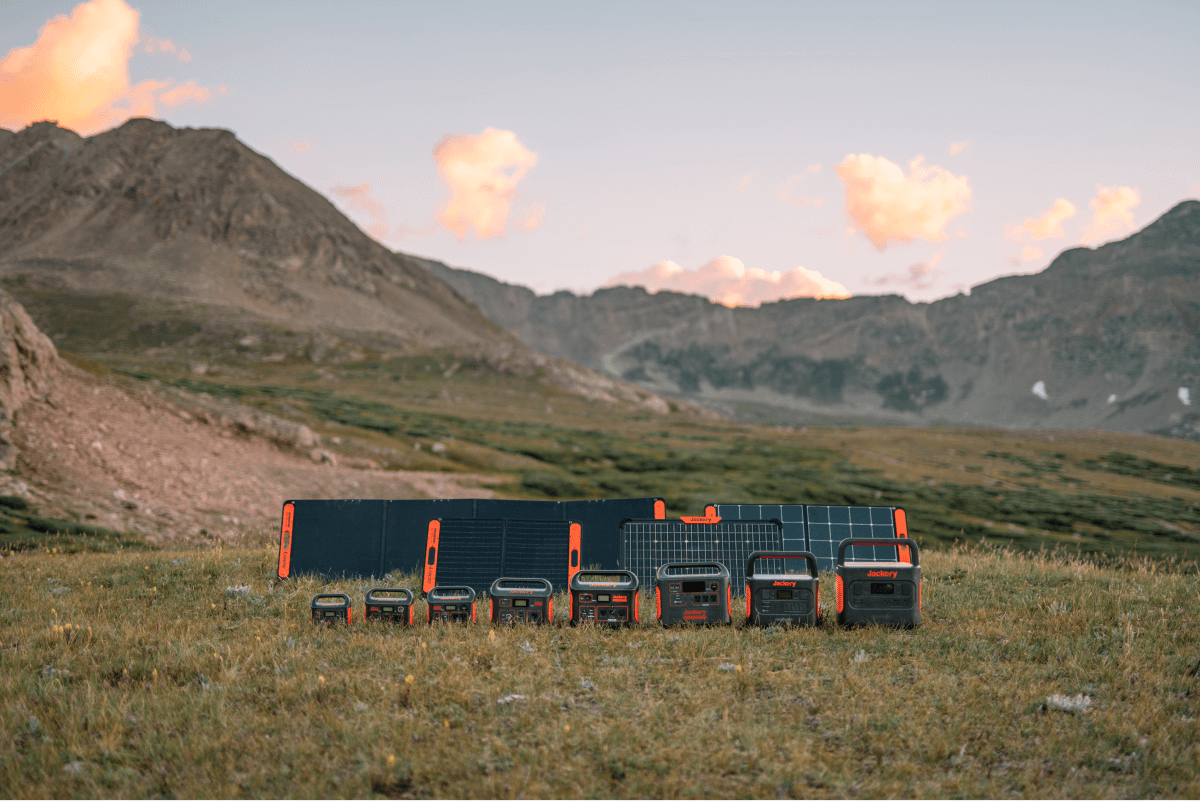
|
Series |
Capacity |
Ports |
Mini Splits Watts |
Working Hours |
|
2160 Wh |
AC Output:120V, 60Hz, 2200W (4400W Peak) USB-A Output: Quick Charge 3.0, 18W Max USB-C Output: 100W Max, (5V, 9V, 12V, 15V, 20V up to 5A) Car Port: 12V,10A AC Input: 120V, 60Hz, 15A Max DC Input: 11V-17.5V, 8A Max, Double to 8A Max 17.5V-60V, 12A, Double to 24A/1400W Max |
9000Rating: 700W |
2.6 H |
|
|
12000Rating: 900W |
2.04 H |
|||
|
15000Rating: 1100W |
1.66 H |
|||
|
18000Rating: 1400W |
1.3 H |
|||
|
1518 Wh |
AC Output: 120V, 60Hz, 1800W (3600W Peak) USB-A Output: Quick Charge 3.0, 18W Max USB-C Output: 100W Max, (5V, 9V, 12V, 15V, 20V up to 5A) Car Port: 12V,10A AC Input:120V, 60Hz, 10.83A Max DC Input: 11V-17.5V, 8A Max, Double to 8A Max 17.5V-60V, 12A, Double to 24A/1400W Max |
9000Rating: 700W |
1.8 H |
|
|
12000Rating: 900W |
1.4 H |
|||
|
15000Rating: 1100W |
1.1 H |
|||
|
18000Rating: 1400W |
0.92 H |
|||
|
1002Wh |
AC Output: 120V, 60Hz, 1000W (2000W Peak) USB-A Output: Quick Charge 3.0, 18W Max USB-C Output: 100W Max, (5V, 9V, 12V, 15V, 20V up to 5A) Car Port: 12V,10A AC Input:120V, 60Hz, 15A Max DC Input: 12V-17.5V, 8A Max, Double to 16A Max 17.5V-60V, 11A, Double to 22A/800W Max |
9000Rating: 700W |
1.21 H |
|
|
12000Rating: 900W |
0.49 H |
|||
|
15000Rating: 1100W |
0.77 H |
Solar Powered Mini Split FAQs
1. What size of solar generator do I need to power a mini split?
The size of the solar generator needed to power a mini-split depends on the air conditioner's size, i.e., BT rating. For example, the RV mini-split air conditioners are approximately 12000 BTU. This will initially use 900 watts of power until the set temperature is achieved and around 300 watts to maintain it.
So, we can see that Jackery solar generator 2000 Pro can run a 12000 BTU mini split for 2 hours. The calculation is simple. Take the capacity of the generator and multiply it by 0.85. We are taking 15% as capacity loss during operation, that is why this multiplication.
So, if the capacity of the generator is 2160 Watt-hours, then,
Capacity after expected performance loss = capacity x 0.85
= 2160 x 0.85
= 1836
A 12000 BTU mini split uses 900 Watts.
So, working hours = 1836/900
Working hours = 2.04 hours
2. How big of a solar mini split do I need?
The size of solar mini split depends on factors including;
- Ceiling height
- Quality of insulation
- Outdoor Climate
- Number and quality of windows
- Sun exposure
Take the area of the room and multiply the room’s area by 25.
The answer is the BTU average of your requirement mini split.
Final Thoughts
Solar-powered mini split units are gaining popularity because they are convenient in various aspects. Since they are energy efficient, they use less power; hence they are cost-effective. They are also used for outdoor adventures like RV, camping, picnic, and others. Solar generators are a very efficient method of powering your air conditioners. Since these generators are portable, they are also great camping equipment.
Disclaimer:
The runtime mentioned for appliances powered by Jackery is for reference only. Actual runtime may vary under different conditions. Please refer to real-world performance for accurate results.






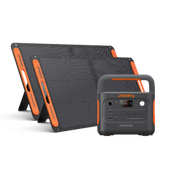


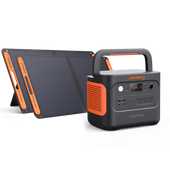

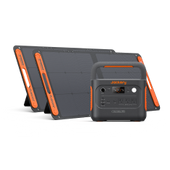
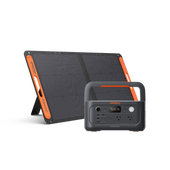
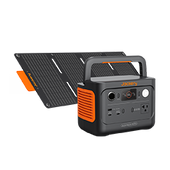
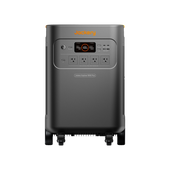
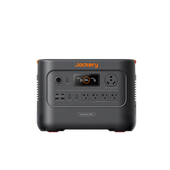
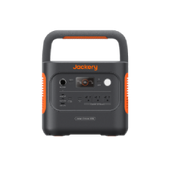
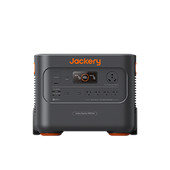
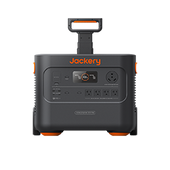

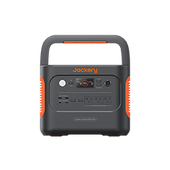
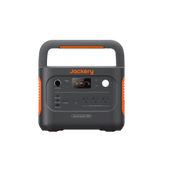
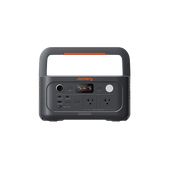

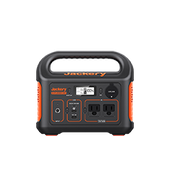
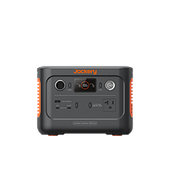
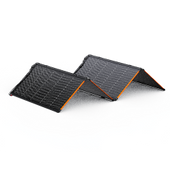
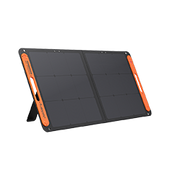

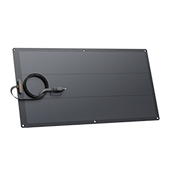
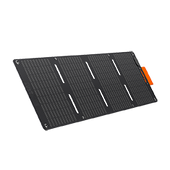
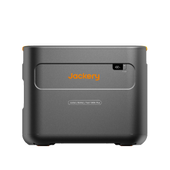
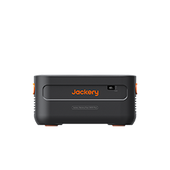
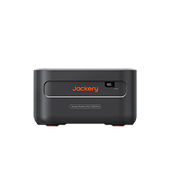
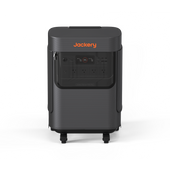
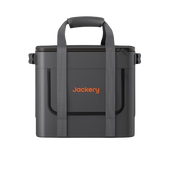
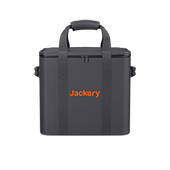
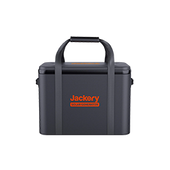
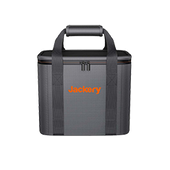
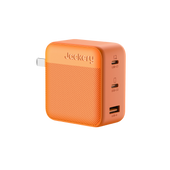
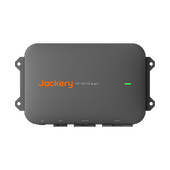
![[Add-on] Jackery Manual Transfer Switch for Explorer 5000 Plus](http://ca.jackery.com/cdn/shop/files/add-on-jackery-manual-transfer-switch-for-5000-plus-240V.webp?v=1757043692&width=170)
